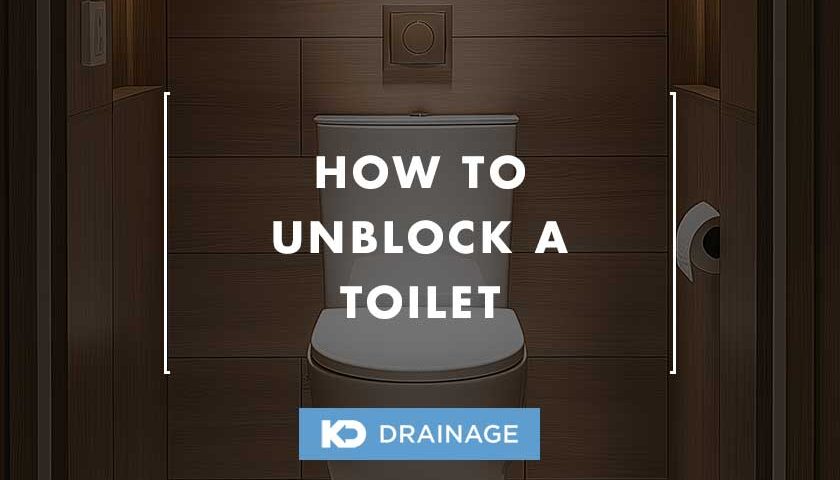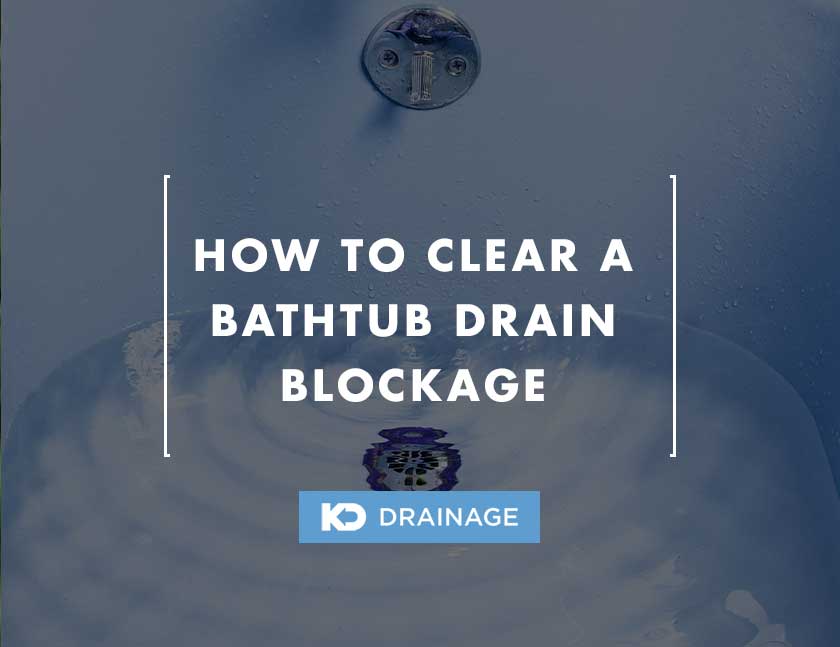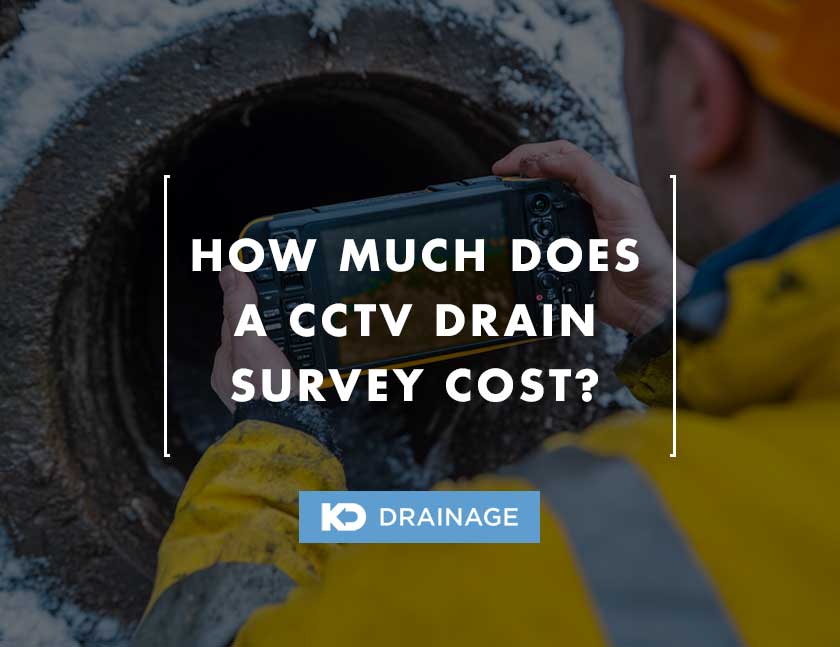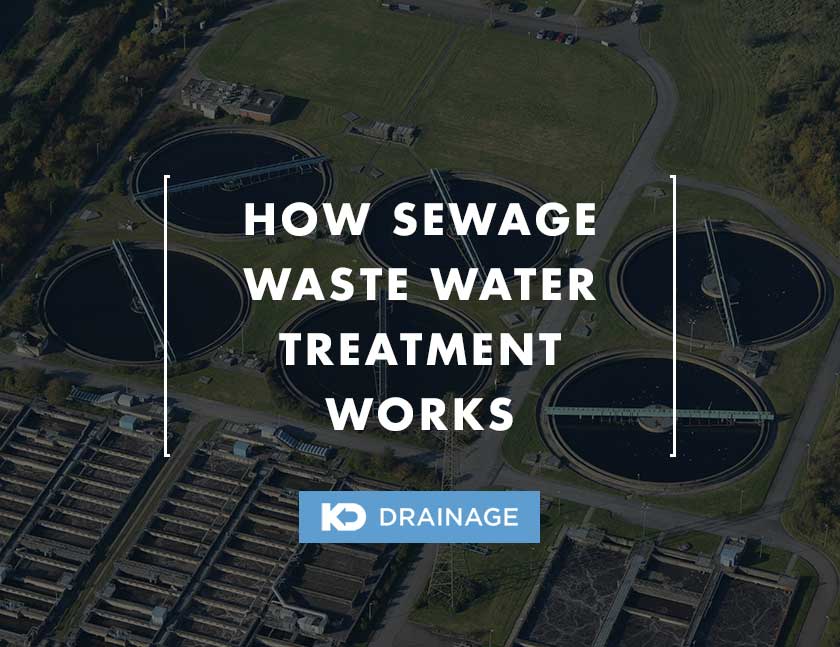
How Sewage Waste Water Treatment Works
1 January 2025
How Much Does a CCTV Drain Survey Cost?
1 March 2025How to Unblock a Toilet
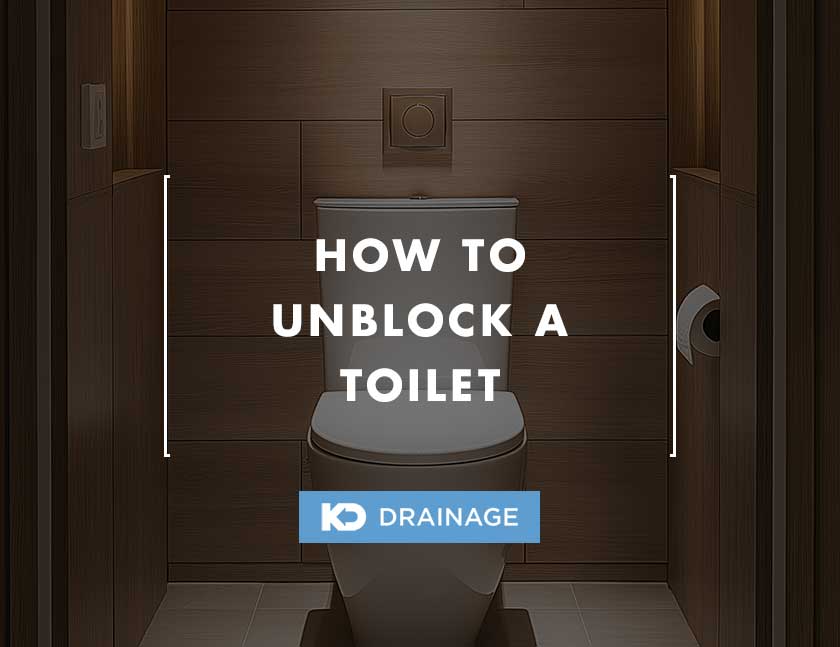
A blocked toilet is an inconvenient and often unpleasant situation that can happen to anyone, regardless of how careful you are.
It’s one of those household issues that seems to strike at the worst possible moment, leaving you frustrated and unsure of what to do next.
However, with a little know-how and a few basic tools, you can often unblock your toilet in no time.
This article will walk you through practical steps to unblock your toilet, explain the common causes of clogs, and share tips to prevent them from happening again.
Whether you’re dealing with a minor issue or a more stubborn blockage, we’ve got you covered.
Table of Contents
How Does a Toilet Work?
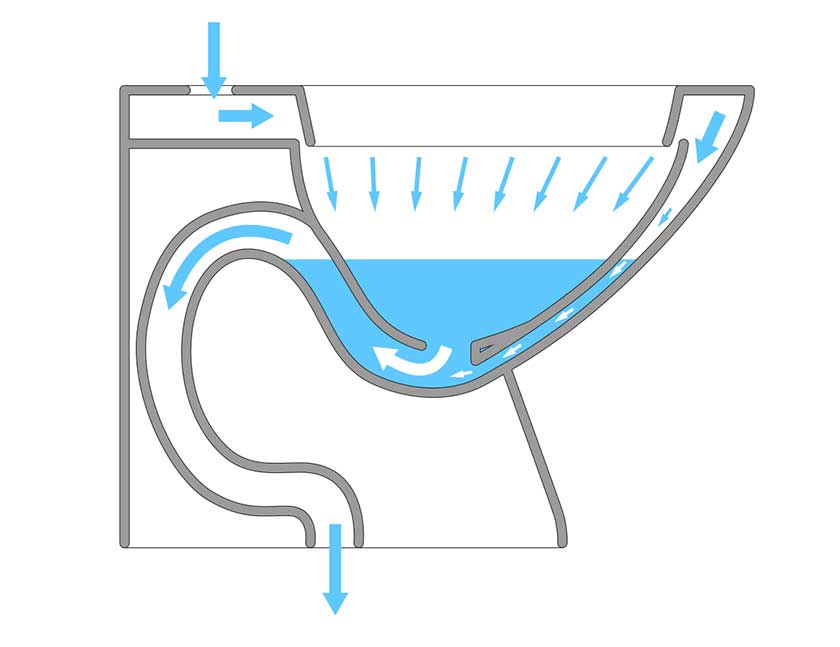
Source: Wikipedia
A toilet operates using a simple yet effective system that relies on water pressure, gravity, and mechanical components.
The Flush
The flushing process begins when you press the handle or button on the toilet.
This action lifts the flapper or flush valve inside the tank, releasing water stored in the tank.
The water rushes into the toilet bowl through the rim holes and siphon jet, creating a forceful flow.
The Trap
Beneath the toilet bowl is the trap, a curved pipe that holds a small amount of water.
This water acts as a barrier to prevent sewer gases from entering your home.
During a flush, waste and water flow into the trap.
The speed and pressure of the water create a siphoning effect, pulling the waste through the trap and into the drainpipe.
Gravity
Gravity plays a key role in most toilets, especially gravity-fed models.
The design ensures that water flows downward with enough force to carry waste through the system.
Pressure-assisted toilets use a tank within the main tank to compress air, adding extra power to the flush.
Refilling
After the flush, the tank automatically refills.
A fill valve opens, allowing water to flow in until it reaches a set level.
A float mechanism shuts off the valve to prevent overflow.
Plumbing
The waste flows through the drainpipe, connecting to either a sewer line or a septic system.
A clear pathway ensures smooth operation.
Any disruption, such as blockages or low water pressure, can interfere with the toilet’s functionality.
How Does a Toilet Get Blocked?
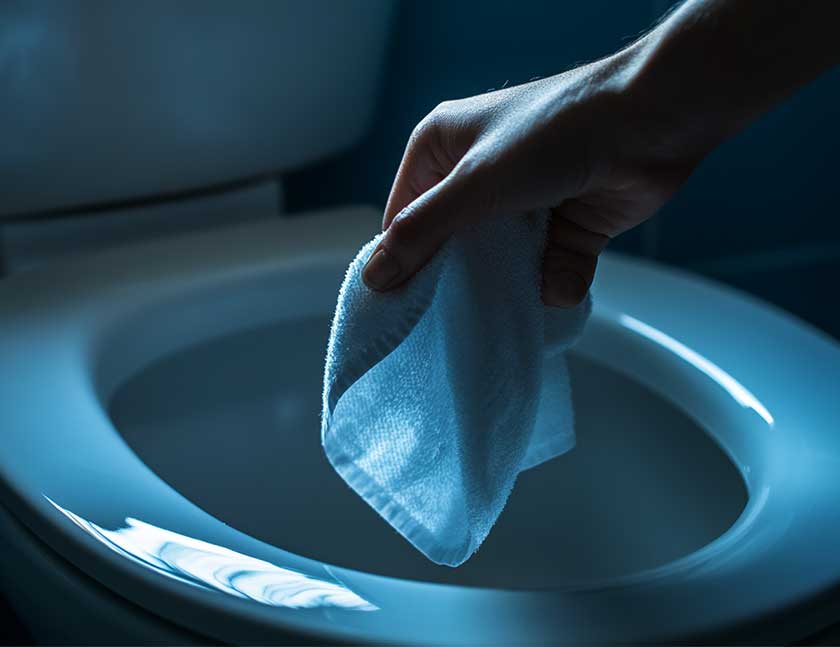
A toilet gets blocked when something obstructs the flow of water and waste through the system.
Understanding the causes of blockages can help you prevent them and address issues more effectively.
Excessive Toilet Paper
Flushing large amounts of toilet paper at once is a common cause of blockages.
While toilet paper is designed to break down in water, using too much can overwhelm the system, especially in older toilets with weaker flushing power.
Non-Flushable Items
Flushing items not meant for toilets is another major cause.
Wipes, cotton swabs, sanitary products, and paper towels can get stuck in the trap or pipes.
These items do not break down like toilet paper and often create stubborn clogs.
Hard Water Deposits
In areas with hard water, mineral deposits can build up in the toilet’s pipes over time.
These deposits narrow the passage, making it easier for waste to get stuck.
Foreign Objects
Accidentally dropped objects like toys, toothbrushes, or other household items can obstruct the toilet’s trap.
These blockages are common in homes with young children.
Old or Damaged Plumbing
Older plumbing systems with narrow pipes or cracks can make toilets more prone to blockages.
Tree roots invading underground pipes can also disrupt waste flow.
Low-Flow Toilets
Some low-flow toilets, designed to save water, can lack the flushing power needed to clear waste effectively.
This can lead to frequent blockages.
How to Unblock a Toilet
Trying to unblock a toilet can be unpleasant, but most clogs are easy to resolve with the right approach.
This guide outlines various methods, ranging from simple DIY solutions to professional intervention.
Below, you’ll find step-by-step instructions under each method to help you tackle the problem effectively.
Hot Water
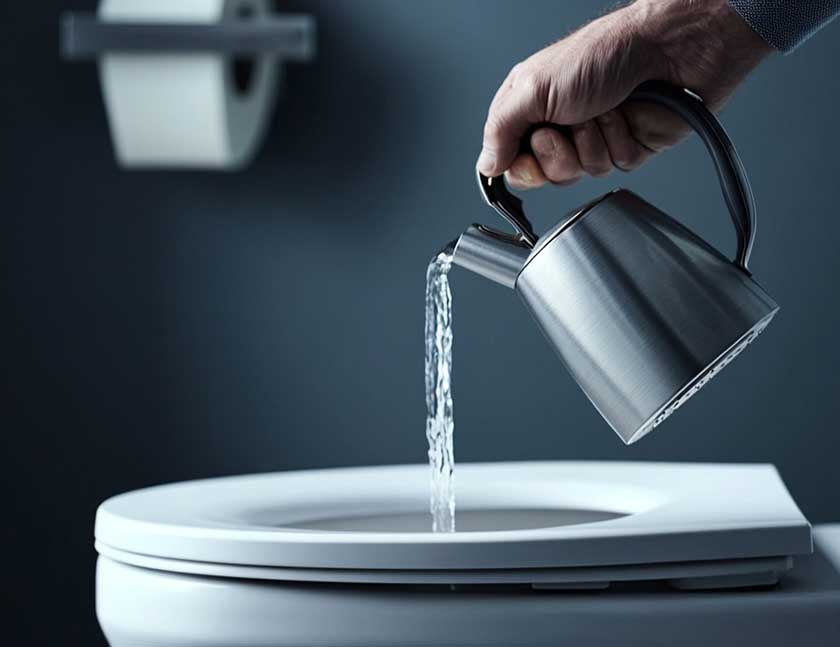
Hot water is a simple, eco-friendly solution for minor clogs caused by paper or organic waste.
It can soften materials and encourage them to dislodge.
Steps to Use Hot Water to Unblock a Toilet
Heat the Water
Heat a bucket of water until it’s warm but not boiling.
Boiling water can crack porcelain.
Pour Carefully
Pour the water into the toilet bowl from waist height.
The force of the water helps break up the clog.
Wait
Allow the water to sit for 10–15 minutes.
Flush
Test the results by flushing. Repeat if necessary.
Baking Soda
Baking soda, combined with vinegar, creates a fizzing reaction that can loosen blockages without harsh chemicals.
Steps to Use Baking Soda to Unblock a Toilet
Prepare the Mixture
Pour one cup of baking soda into the bowl.
Add Vinegar
Slowly pour two cups of vinegar, allowing the fizz to occur.
Wait and Check
Let the mixture sit for 30 minutes, then flush.
Repeat if Needed
If the clog persists, try again or move to another method.
Bleach
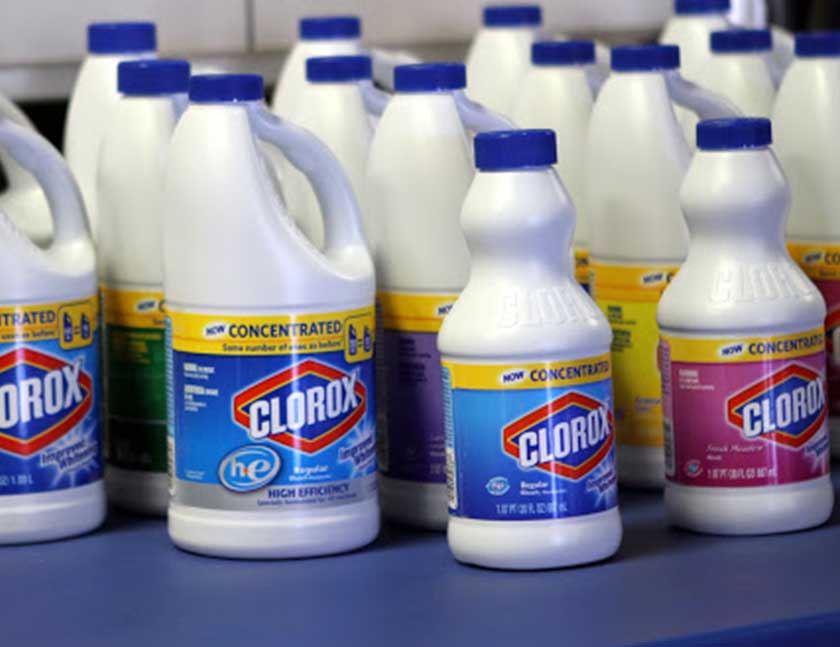
Source: Wikipedia
Bleach is a strong cleaning agent that breaks down organic waste quickly, but it should be used sparingly.
Steps to Use Bleach to Unblock a Toilet
Add Bleach
Pour one cup of bleach directly into the toilet bowl.
Wait
Allow it to sit for 10–15 minutes to break down waste.
Flush
Test by flushing the toilet.
Precautions
Never mix bleach with other cleaning products, as it can create harmful fumes.
Commercial Products
Commercial drain cleaners are powerful and designed to handle tougher clogs.
Use them when simpler solutions fail.
Steps to Use Commercial Products to Unblock a Toilet
Read Instructions
Follow the product’s guidelines carefully, as misuse can damage pipes.
Apply Cleaner
Pour the recommended amount into the toilet.
Wait
Let the product work for the specified time, often several hours or overnight.
Flush
Check if the blockage is cleared.
Avoid overusing these products to protect your plumbing.
Plunger
A plunger creates suction and pressure to dislodge clogs.
It’s a reliable tool for most blockages, but knowing how to use a plunger is key.
Steps to Use a Plunger to Unblock a Toilet
Choose the Right Plunger
Use a flange plunger, designed for toilets.
Position Properly
Place the plunger over the drain hole, ensuring a good seal.
Plunge Firmly
Push and pull the plunger in quick, firm motions without lifting it.
Check Progress
Repeat the process until the water drains smoothly.
Toilet Auger
A toilet auger is a flexible tool designed to reach and break up clogs deep within the toilet’s pipes.
Steps to Use a Toilet Auger to Unblock a Toilet
Insert the Auger
Guide the auger’s end into the toilet bowl drain.
Turn the Handle
Rotate the handle clockwise to push the auger through the pipe.
Break Up the Clog
Twist and maneuver the auger to dislodge the blockage.
Remove the Auger
Pull it out carefully and flush to check if the clog is cleared.
Pressure Washer
A pressure washer with a drain-cleaning attachment can remove stubborn clogs caused by grease, scale, or hard materials.
Steps to Use a Pressure Washer to Unblock a Toilet
Attach the Nozzle
Use a drain-cleaning attachment on the pressure washer.
Insert the Nozzle
Carefully feed it into the toilet drain.
Apply Pressure
Turn on the pressure washer to release high-pressure water.
Test the Flush
Check if the blockage has cleared.
Call a Professional
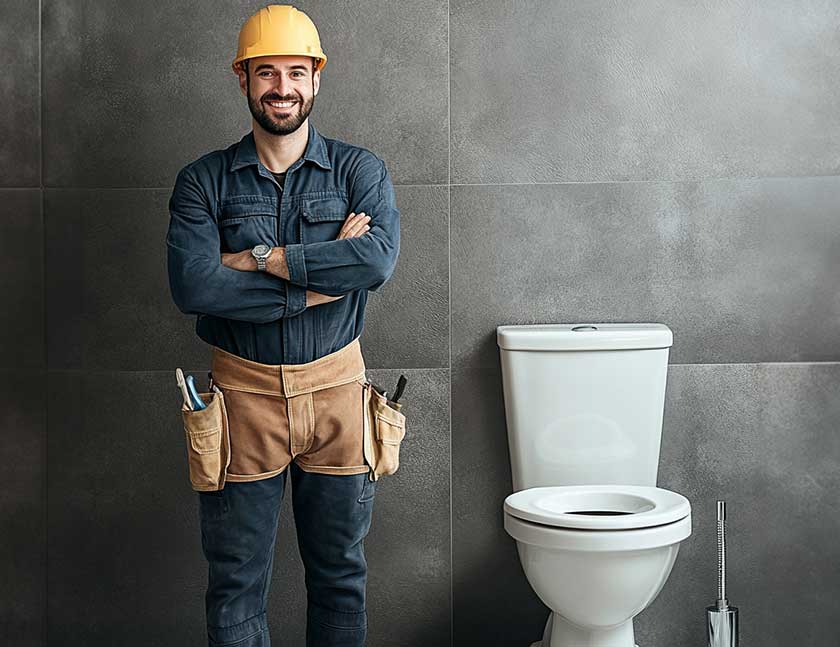
Some clogs are beyond DIY fixes, such as those caused by tree roots, damaged pipes, or deep blockages.
In these instances you should call a professional, such as us here at KD Drainage.
Benefits of Professional Help to Unblock a Toilet
Specialised Tools
Professionals use advanced equipment like hydro jets and cameras to locate and clear clogs.
Expert Diagnosis
They can identify underlying plumbing issues that may cause recurring blockages.
Guaranteed Results
Plumbers ensure the problem is resolved safely and thoroughly.
How to Help Prevent Toilets Getting Blocked
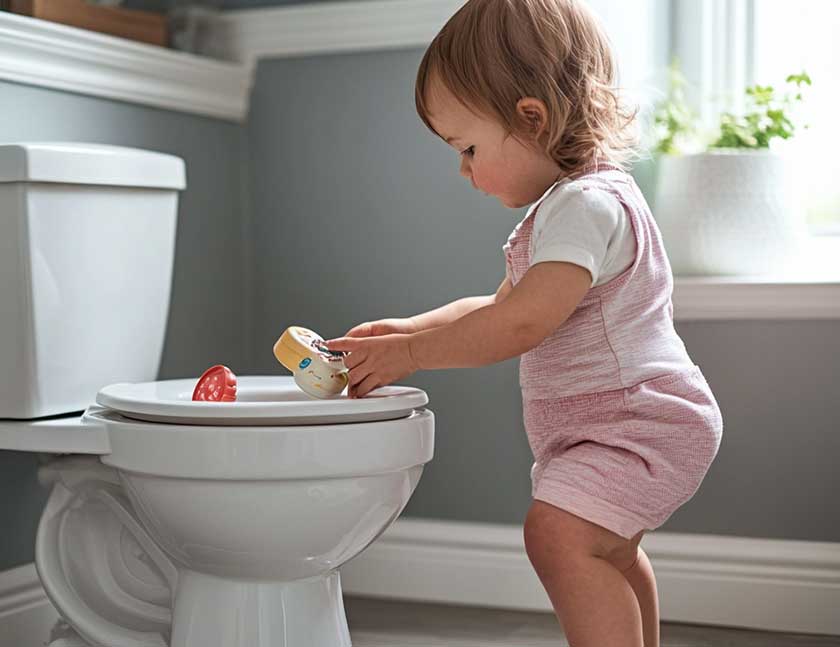
Preventing toilet blockages is easier than dealing with them.
Simple changes in usage and regular maintenance can keep your toilet running smoothly.
Here are effective tips to prevent clogs:
Flush Only Appropriate Items
Toilets are designed to handle human waste and toilet paper only.
Avoid flushing non-flushable items such as:
- Wet wipes
- Sanitary products, cotton balls, or swabs.
- Paper towels or tissues, which don’t dissolve easily.
Use Toilet Paper Wisely
Using excessive amounts of toilet paper can overwhelm the system, especially in older toilets.
Teach everyone in your household to use only as much as needed.
For larger amounts, consider flushing in smaller batches.
Monitor Children’s Activities
In households with young children, toys or other objects can sometimes end up in the toilet.
Teach children not to flush anything other than waste and toilet paper, and supervise their bathroom habits when necessary.
Avoid Pouring Grease
Never dispose of grease, oils, or fats in the toilet.
These substances can solidify in the pipes and contribute to blockages.
Perform Regular Maintenance
Inspect your toilet and plumbing system periodically to identify and address potential issues, such as hard water deposits or aging pipes.
Consider Upgrading Your Toilet
If your toilet frequently clogs, it might be worth upgrading to a more efficient model with a stronger flush.
Conclusion
You should now have all the information you need in unblocking a toilet.
A blocked toilet doesn’t need to ruin your day.
By understanding the cause, you can fix most clogs easily.
Simple tools like a plunger or baking soda can work wonders.
Preventing clogs in the future saves time and trouble.
If you do require a professional, don’t hesitate to get in contact with us here at KD Drainage.
Keeping your toilet clear ensures it stays reliable for daily use.

